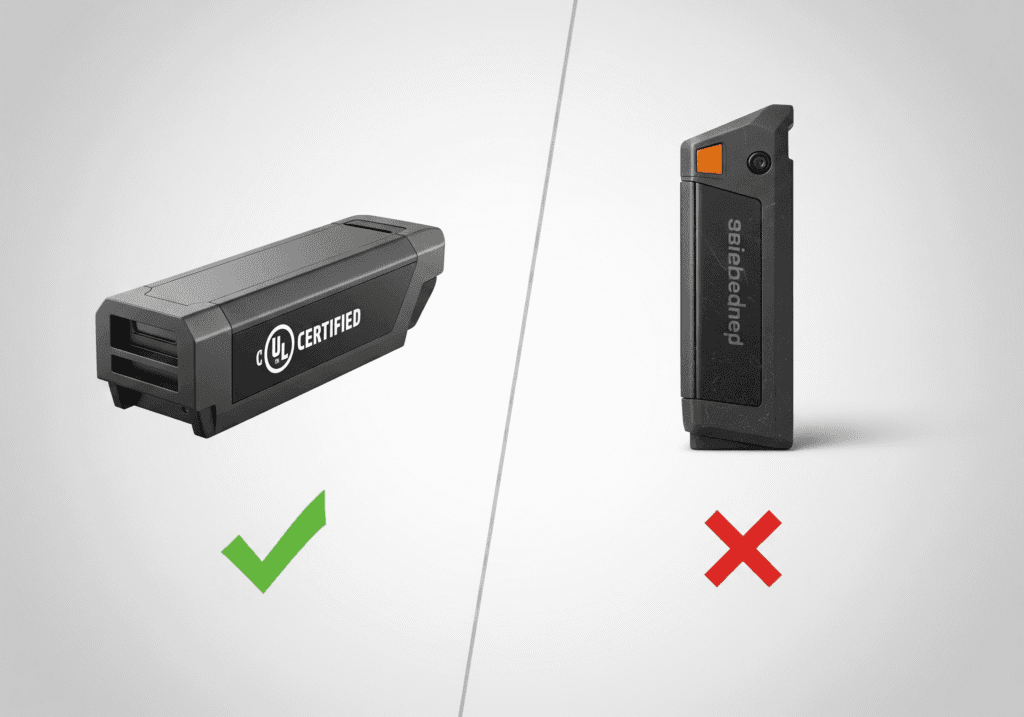The Startling Truth Behind E-Bike Battery Fires
Videos showing e-bike batteries igniting into flames have shocked owners worldwide. While these incidents are rare, the consequences can be devastating. Almost every fire incident shares one common factor: the battery system involved lacked proper safety certification. As electric mobility grows globally, understanding battery safety becomes critical—not just to protect your investment but your life.
What Is UL 2849 Certification and Why It Matters
UL 2849 is a globally recognized safety standard developed by Underwriters Laboratories (UL), ensuring that the entire e-bike electrical system—battery, charger, motor, and controller—undergoes rigorous testing. This includes:
- Protection against overcharging and overdischarging
- Resistance to short circuits and electrical faults
- Robustness against physical damages like punctures or impacts
- Water and dust ingress protection
- Thermal and fire safety testing
This certification is the gold standard used by top manufacturers worldwide to guarantee their e-bike systems are safe and reliable. In the US and many global markets, UL 2849 compliance is mandatory for legal sales—but in other markets, it’s often optional, which creates risks for consumers.
How to Find the UL Certification on Your E-Bike

When shopping for or inspecting an e-bike, keep an eye out for the UL mark, usually found:
- On the battery pack casing
- On the charger unit
- Near the motor controller or on the frame
The label typically features the UL logo alongside the number “UL 2849” or a similar certification code.
If you can’t find this mark visually, ask the dealer for certification documentation or check manufacturer resources online.
The Risks of Buying an Uncertified E-Bike Battery System
Uncertified batteries often lack adequate Battery Management Systems (BMS), safety cutoffs, or quality cell construction. Common risks include:
- Overheating and thermal runaway leading to fires
- Unexpected battery failure or explosions under stress
- Damage caused by incompatible or substandard chargers
- Increased risk of injury or property damage
The cost savings from uncertified cheaper batteries pale in comparison to the potential consequences.

What You Should Do If Your Battery Lacks Certification
- Avoid using third-party or generic chargers that are not specified by your manufacturer.
- Charge your e-bike in a well-ventilated space away from living areas.
- Never leave the e-bike charging unattended for long periods.
- Consider upgrading to a certified battery system if available from your manufacturer.
The Vecharged Expert Verdict
In today’s crowded and varied e-bike market, UL 2849 certification is the baseline for safety—not a luxury or regional requirement. If your bike’s battery system isn’t UL certified, you’re exposing yourself to unnecessary, potentially dangerous risks.
Our expert advice is simple and clear: do not buy it without UL certification.
Safety certifications mean lives saved, property protected, and peace of mind every time you hit the road.
Share the Knowledge—Protect Your Loved Ones
- Share this guide with family, friends, and communities considering or owning electric bikes.
- Always insist on UL 2849 certification when purchasing or replacing batteries.
- Keep yourself informed to fight unsafe products flooding the market.

Suhas Shrikant is the founder of Vecharged and an engineering enthusiast specializing in high-power off-grid solar systems. He has designed and built over a dozen custom systems and uses his hands-on, field-tested experience to create Vecharged’s expert guides and reviews.
















[…] DANGER: The Risks of Uncertified Batteries Using a battery without a proper safety certification like UL is extremely hazardous. These […]